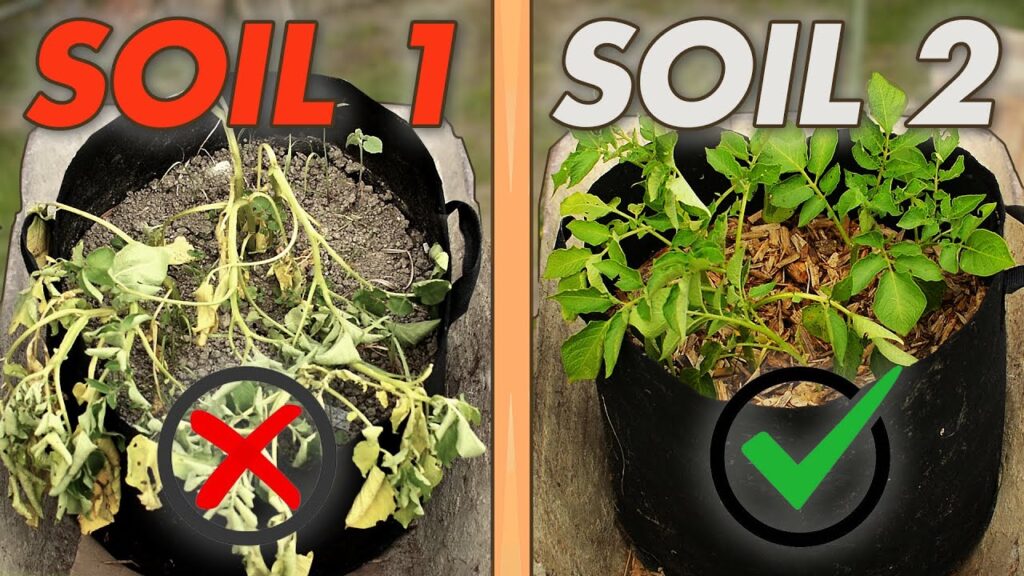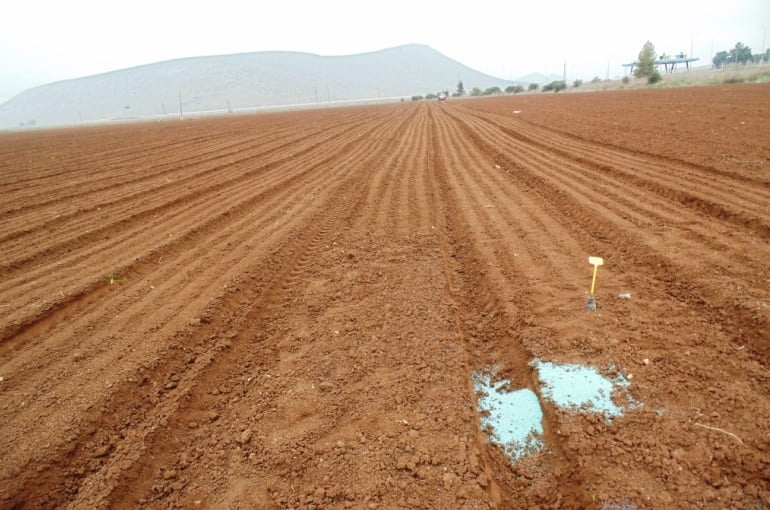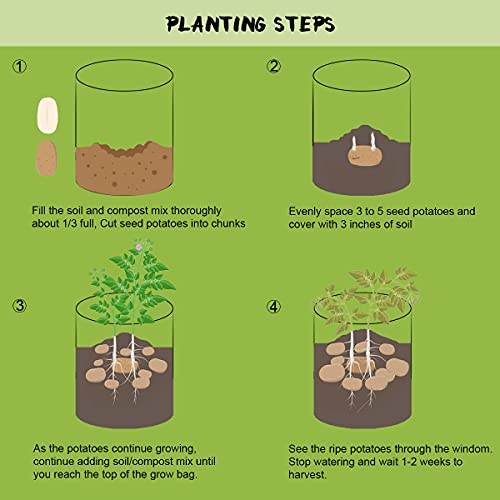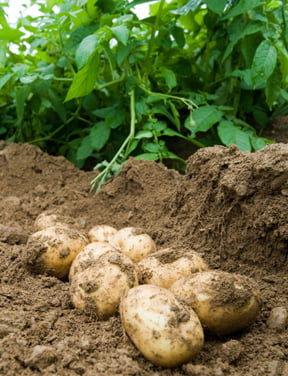Determining the ideal soil for optimal potato growth is a topic that has long perplexed agriculturalists and home gardeners alike. Yet, the answer to this pressing question can be found through a careful examination of the factors affecting potato cultivation. In this article, you will explore the key components that contribute to the best soil for potatoes and gain valuable insights into how to maximize your potato harvest. Embark on this educational journey to unlock the secrets hidden beneath the earth’s surface and unleash the full potential of your potato-growing endeavors.

Factors to Consider
When it comes to growing potatoes, there are several important factors to consider in order to create the best possible growing environment. These factors include climate, drainage, soil pH, nutrient content, and texture. Each of these factors plays a crucial role in determining the success and productivity of potato plants. By paying close attention to these factors and making necessary adjustments, you can ensure the optimal conditions for growing high-quality potatoes.
Climate
The climate in which you grow potatoes is a critical factor to consider. Potatoes thrive in certain temperature ranges and are sensitive to frost and excessive rainfall. It is important to choose a climate that offers sunny and warm weather, while also considering the seasonal changes and potential climate fluctuations in your region.
Temperature
Potatoes prefer a cool climate with temperatures ranging between 60 and 70 degrees Fahrenheit. These moderate temperatures provide an ideal growing environment for the development of tubers. Extreme heat can cause stress to the plants and affect their growth, while freezing temperatures can damage the foliage and yield.
Frost
Potatoes are highly susceptible to frost and it is important to consider the last expected frost date in your region before planting. Frost can kill or severely damage potato plants, resulting in a significant loss of yield. If you live in an area with a risk of late spring or early fall frosts, it is crucial to either choose early-maturing varieties or take measures to protect the plants, such as covering them with frost blankets or planting them in containers that can be moved indoors.
Rainfall
The amount of rainfall your region receives is another important climate factor to consider when growing potatoes. Excessive rainfall can lead to waterlogged soil, poor drainage, and increased risk of diseases like potato blight. On the other hand, insufficient rainfall can result in drought stress and hinder the growth and development of potatoes. It is crucial to strike a balance by providing adequate water without overwatering, ensuring the soil remains moist but not waterlogged.

Drainage
Drainage is a crucial factor to consider when preparing the soil for potato cultivation. Adequate drainage ensures that excess water is efficiently removed from the root zone, preventing waterlogging, root rot, and other potential issues.
Importance
Good drainage is essential for healthy potato growth as it facilitates a sufficient supply of oxygen to the roots. Oxygen is crucial for root respiration and nutrient uptake, ensuring that the plants can efficiently absorb water and essential nutrients from the soil. When the soil lacks proper drainage, excess water can accumulate around the roots, leading to oxygen deprivation and root suffocation.
Types of Drainage
There are two main types of drainage systems: natural drainage and artificial drainage. Natural drainage relies on the natural slope of the land and the infiltration of water into the soil. However, not all soils have optimal natural drainage, especially heavy clay soils. In such cases, artificial drainage systems, such as tile drains or underground drainage pipes, may be necessary to prevent waterlogging.
Improving Drainage
Improving drainage can be done by incorporating organic matter into the soil or creating raised beds. Organic matter, such as compost, helps improve soil structure, allowing for better drainage. Raised beds can also enhance drainage by elevating the planting area, preventing water from collecting around the roots. Additionally, regular tilling and incorporating coarse sand or perlite into the soil can increase its permeability and enhance overall drainage.
Soil pH
Soil pH refers to the acidity or alkalinity of the soil and is measured on a scale from 1 to 14, with 7 being neutral. Potatoes prefer slightly acidic to neutral soils with a pH range of 5.0 to 7.0. The pH of the soil directly affects the availability of essential nutrients to the plants and can greatly impact their growth and productivity.
Optimal pH Level
The optimal pH level for potatoes lies within the slightly acidic to neutral range. Soil with a pH above 7.0 is considered alkaline and may result in a decreased availability of certain nutrients, such as iron and manganese. Highly acidic soils with a pH below 5.0 can also pose problems, as they may lead to aluminum and manganese toxicity.
Effect of pH on Potatoes
Soil pH affects nutrient availability by influencing mineral solubility. At extreme pH levels, certain essential nutrients may become locked up in the soil, unavailable for uptake by the plants. This can lead to nutrient deficiencies or toxicities, negatively impacting potato growth and yield. Maintaining an appropriate pH level in the soil ensures that the necessary nutrients are readily available for uptake, promoting healthy plant development.
Adjusting pH Levels
To adjust the pH of the soil, various amendments can be used. For acidic soils, the addition of lime can help raise the pH and reduce acidity. Lime contains calcium carbonate, which neutralizes acidity and increases the availability of essential nutrients. If the soil is alkaline, elemental sulfur or aluminum sulfate can be added to lower the pH and make it more suitable for potatoes. It is important to regularly monitor soil pH and make necessary adjustments to ensure optimal growing conditions.

Nutrient Content
Potatoes require a well-balanced supply of essential nutrients in order to grow and produce high-quality tubers. Understanding the nutrient requirements of potatoes and testing the soil for nutrient levels is crucial for successful potato cultivation.
Essential Nutrients for Potatoes
Potatoes require several essential nutrients for proper growth and development. These include nitrogen, phosphorus, potassium, calcium, magnesium, and various micronutrients. Nitrogen is important for foliage development, while phosphorus promotes root development and flowering. Potassium is crucial for tuber development, and calcium helps prevent disorders such as internal brown spot. Magnesium and micronutrients play important roles in enzyme activity and overall plant health.
Testing Soil for Nutrient Levels
To ensure that the soil contains adequate nutrient levels for potato growth, it is advisable to conduct a soil test. Soil testing provides valuable information about the current nutrient status of the soil, allowing for targeted amendments to be made if necessary. Soil testing kits are readily available and can be obtained from agricultural extension offices or private labs. These tests measure the nutrient content of the soil, helping determine if any deficiencies or imbalances need to be addressed before planting.
Amending Nutrient Deficient Soil
If the soil test reveals nutrient deficiencies, various amendments can be used to address the specific nutrient needs of potatoes. Organic matter, such as compost or well-rotted manure, can be added to enrich the soil and provide a slow release of nutrients. If nitrogen is lacking, organic nitrogen sources like blood meal or fish emulsion can be incorporated. Similarly, phosphorus and potassium deficiencies can be remedied by adding organic fertilizers or specific mineral supplements. Micronutrient deficiencies can be corrected by using foliar sprays or incorporating micronutrient-rich materials into the soil.
Texture
Soil texture refers to the size and distribution of particles in the soil, including sand, silt, and clay. The texture of the soil influences its water-holding capacity, drainage, and fertility, all of which play a crucial role in potato cultivation.
Importance of Soil Texture
Soil texture plays a vital role in potato production as it affects the overall soil quality and influences root development, nutrient availability, and water infiltration. Different soil textures have distinct properties that impact plant growth differently. Understanding the soil texture of your planting site will help you make appropriate amendments to optimize soil structure and fertility.
Sandy Soils
Sandy soils have large particles and drain quickly, making them prone to drought and nutrient leaching. While quick drainage can be beneficial in preventing waterlogging, sandy soils require frequent irrigation to maintain adequate soil moisture. Organic matter, such as compost and well-rotted manure, should be added to sandy soils to improve water and nutrient retention, as well as enhance soil structure.
Clay Soils
Clay soils consist of small particles that compact easily and drain poorly. This can lead to waterlogged conditions and oxygen deprivation for the roots. Clay soils have high water-holding capacity but can become heavy and difficult to work with, leading to reduced root growth and nutrient availability. Incorporating organic matter, such as compost or well-rotted leaves, into clay soils helps improve drainage, promote soil aeration, and enhance overall soil structure.
Loamy Soils
Loamy soils, which consist of a balanced mixture of sand, silt, and clay particles, are considered ideal for potato cultivation. Loamy soils have good drainage and water-holding capacity, making them suitable for healthy root development and nutrient uptake. The balanced texture of loamy soils allows for optimal oxygen exchange between the roots and the surrounding soil. If the soil at your planting site is not loamy, incorporating organic matter can help improve its texture and create conditions more conducive to potato growth.

Types of Potatoes
There are numerous potato varieties available, each with its own set of characteristics and preferred growing conditions. Understanding the different types of potatoes and their specific soil preferences is essential for selecting the appropriate varieties for your growing region.
Determining the Variety
When choosing a potato variety, it is important to consider factors such as maturity, resistance to diseases, and specific culinary uses. Certain varieties are better suited for early harvesting, while others are known for their storage capabilities. Additionally, some varieties exhibit resistance to common potato diseases, reducing the risk of crop losses. Consider the preferences of your local market or personal culinary needs when selecting potato varieties.
Different Soil Preferences
Different potato varieties have varying soil preferences, primarily related to their tolerance to different soil conditions. Some varieties are better adapted to heavy clay soils, while others thrive in sandy or loamy soils. When selecting potato varieties, it is important to consider the soil texture and drainage capabilities of your planting site to maximize the chances of successful potato cultivation.
Popular Varieties
There are numerous popular potato varieties that have gained recognition for their taste, texture, and adaptability. Russets, such as the Russet Burbank and Russet Norkotah, are widely renowned for their excellent baking qualities. Yukon Gold and Yellow Finn varieties are favored for their smooth and buttery texture, making them ideal for mashing and boiling. Fingerling potatoes, such as Russian Banana and French Fingerling, offer unique flavors and are well-suited for roasting and salads. These are just a few examples of the wide variety of potatoes available, each offering its own distinct characteristics.
Preparing the Soil
Properly preparing the soil before planting is crucial for creating favorable growing conditions for potatoes. This involves clearing the area, loosening the soil, adding organic matter, and removing any rocks or debris.
Clearing the Area
Before beginning any soil preparation, it is important to clear the planting area of any weeds, rocks, or debris. Weeds compete with potato plants for nutrients and moisture and can hinder their growth. Rocks and debris can interfere with root development and cause misshapen tubers. Removing these obstacles ensures that the potato plants have ample space and resources to thrive.
Loosening the Soil
Loosening the soil is essential for ensuring that the potato roots can penetrate the soil easily and access essential nutrients and moisture. This can be achieved by tilling the soil with a garden fork or cultivating equipment. Loosening the soil also helps improve soil aeration and drainage, preventing waterlogging and root suffocation.
Adding Organic Matter
Adding organic matter to the soil is crucial for improving its fertility, structure, and water-holding capacity. Organic matter, such as compost, well-rotted manure, or leaf mold, provides a slow release of nutrients, enriches the soil, and promotes beneficial microbial activity. Spread a layer of organic matter over the planting area and mix it into the top few inches of soil before planting the potatoes.
Removing Rocks and Debris
After loosening the soil, it is important to remove any remaining rocks or debris. Large rocks can interfere with root development and cause misshapen tubers, while debris can hinder nutrient uptake and promote the growth of pests and diseases. Removing these obstacles ensures a clean and debris-free planting area, promoting optimal tuber development and overall plant health.

Planting Potatoes
Once the soil is properly prepared, it is time to plant the potatoes. Proper planting depth, spacing, and hilling techniques are important considerations to ensure successful potato growth and optimal tuber production.
Planting Depth
Planting potatoes at the correct depth is crucial for healthy root development and tuber formation. The general rule of thumb is to plant potatoes at a depth of 4 to 6 inches. Planting too shallowly may result in sunburned tubers, while planting too deeply can inhibit tuber formation and make it difficult for the sprouts to emerge through the soil.
Spacing
Proper spacing between potato plants allows for adequate airflow, reduces the risk of diseases, and ensures optimal access to light and nutrients. Spacing requirements vary depending on the potato variety and its growth habit. As a general guideline, space potato plants approximately 12 to 15 inches apart, with rows spaced 2 to 3 feet apart. This provides enough room for the plants to grow without overcrowding, allowing for better yield and overall plant health.
Hilling
Hilling is a common practice in potato cultivation that involves gradually building up soil around the base of the potato plant as it grows. Hilling helps prevent tubers from being exposed to sunlight, preventing greening and the production of solanine, a toxic compound. It also promotes the development of additional underground stems and roots, leading to increased tuber production. Begin hilling when the plants are around 6 inches tall, gradually mounding soil around the base of the plants throughout the growing season.
Managing Soil Health
Maintaining soil health is vital for long-term potato cultivation success. A combination of practices, such as crop rotation, companion planting, mulching, and regular soil monitoring, can help promote soil fertility, prevent diseases, and enhance overall plant vigor.
Crop Rotation
Crop rotation is an effective practice that helps break disease cycles, manage pests, and maintain soil fertility. Avoid planting potatoes in the same area year after year, as this can increase the risk of soilborne diseases and deplete essential nutrients. Rotate potatoes with other crops, such as legumes or grains, to help naturally restore soil fertility and reduce soilborne pathogens.
Companion Planting
Companion planting involves growing certain plants together to promote beneficial relationships between them. When it comes to potatoes, companion plants like marigolds, beans, and corn can help deter pests, attract beneficial insects, and improve soil quality. For example, marigolds release natural compounds that repel nematodes and other soilborne pests, while beans help fix nitrogen in the soil, enriching it for the potatoes.
Mulching
Mulching provides several benefits to potato plants and the soil. Mulch helps conserve soil moisture, suppress weed growth, regulate soil temperature, and prevent soil erosion. Apply a layer of organic mulch, such as straw or shredded leaves, around the base of the potato plants. This keeps the soil consistently moist, reduces the need for frequent watering, and promotes healthy root development.
Soil Monitoring
Regularly monitoring the soil is essential for maintaining optimal growing conditions for potatoes. This involves assessing the soil moisture, nutrient levels, and pH levels. A moisture meter can be used to check the soil moisture content, ensuring that the plants receive adequate water without overwatering. Periodic soil tests will help determine if any nutrient deficiencies or imbalances need to be addressed. pH testing kits can be used to monitor and adjust soil pH as necessary, ensuring that the potatoes have access to essential nutrients.
In conclusion, growing potatoes successfully requires careful consideration of several important factors. Climate, drainage, soil pH, nutrient content, and soil texture all play vital roles in creating the optimal growing conditions for potatoes. By understanding the specific needs of potatoes and implementing appropriate practices, such as soil preparation, planting techniques, and soil management, you can ensure healthy plant growth and maximize yield. Remember to regularly monitor the soil, make necessary adjustments, and choose the right potato varieties for your region to achieve the best possible results in your potato cultivation endeavors.



